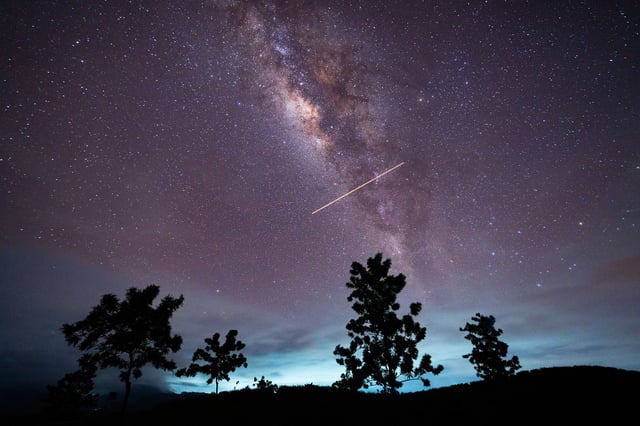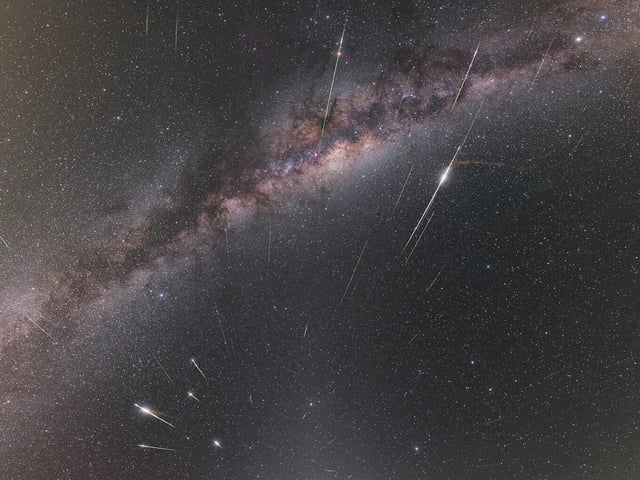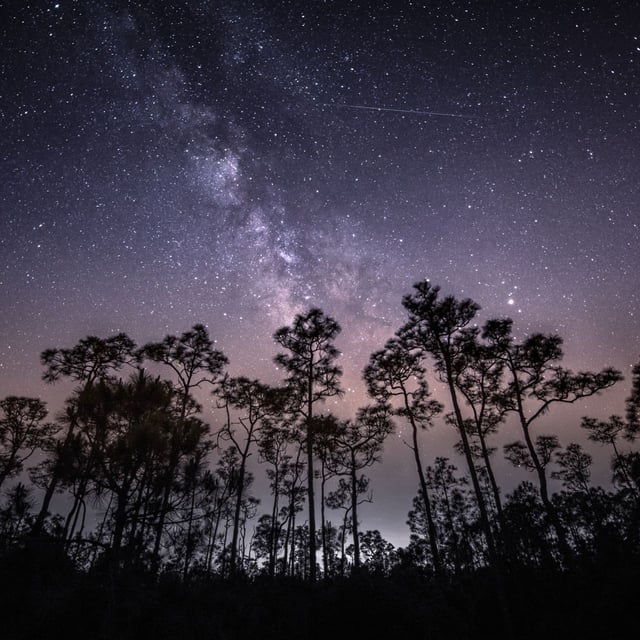Overview
- The Eta Aquarid meteor shower, caused by debris from Halley's Comet, peaks in the predawn hours of May 5-6, offering ideal viewing conditions after the moon sets around 3 a.m.
- Southern Hemisphere observers can expect up to 50 meteors per hour under optimal conditions, while Northern Hemisphere viewers may see 10-20 meteors per hour at most.
- The meteors radiate from the constellation Aquarius near the star Eta Aquarii, with no special equipment needed for viewing—just dark skies and patience.
- Meteors from the Eta Aquarids are known for their speed, entering Earth's atmosphere at 65 kilometers per second and often leaving glowing trails that linger briefly.
- The shower remains active through May 28, but peak visibility diminishes quickly after May 6, making the next few nights the best time to view this celestial event.



